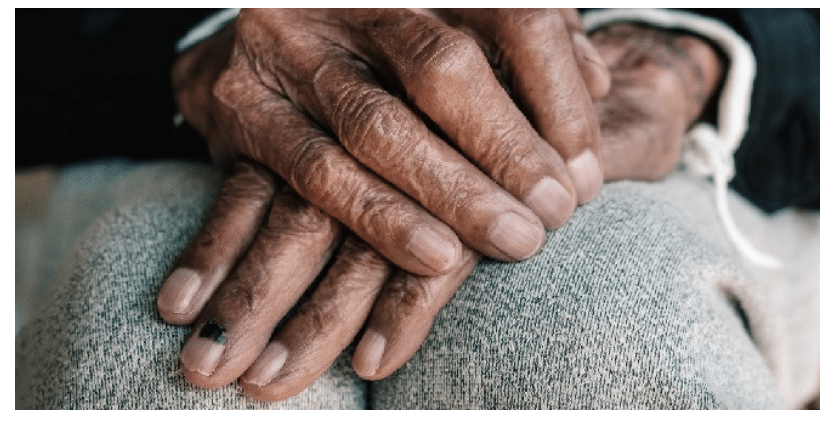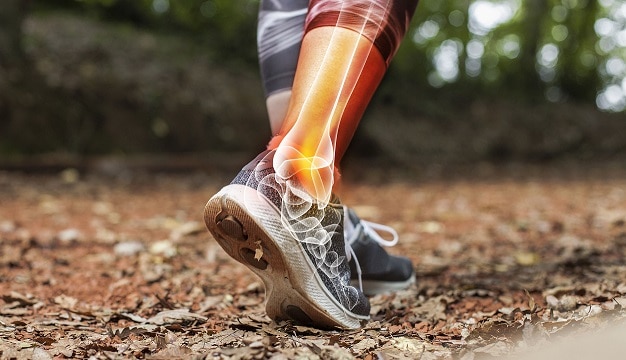Joint Health
Joint Health


Healthy joints are vital for staying mobile throughout your life and doing the sports and other activities you enjoy. Over time your joints go through wear and tear, but there’s plenty you can do now to protect and strengthen them.
Back to top
CONTENTS
- Overview
- Joint problems
- Keeping your joints healthy – Tackle problems early – Stay active – Maintain a healthy weight

Back to top
OVERVIEW
A joint is where two or more bones “join”, or meet, connected by ligaments and muscles for stability. Cartilage, the smooth, connective tissue covering the ends of the joint bones, allows them to glide over each other when they move and helps distribute compression forces.1 Most of us don’t give our joints much thought until they start hurting. But looking after them from early on can help alleviate problems that might occur as you get older, with benefits for your mobility and overall health.2
Back to top
JOINT PROBLEMS
Certain diseases, as well as overuse and injury, can cause joint swelling, pain and inflammation. “Arthritis” means joint inflammation, but the term often refers to joint disorders broadly. There are many types of arthritis; the most common, especially among older people, is osteoarthritis. In this condition, the cartilage wears away, causing the bones to rub together and leading to pain, swelling and loss of motion. There are treatments for arthritis, but proactive prevention is the best way to help avoid and alleviate these problems.1

Back to top
KEEPING YOUR JOINTS HEALTHY
Tackle problems early Joint pain may have a simple cause, such as incorrect form when exercising. Or it may indicate a more complex problem, such as early-onset osteoarthritis. See your doctor if you have a joint injury, or experience any arthritis warning signs:


Back to top
STAY ACTIVE
Regular exercise keeps the muscles around your joints strong and working well. People who already have arthritis also benefit from exercise, which helps increase mobility and reduce disability.1 Exercise tips for healthy joints:
- If you haven’t exercised for a while, first consult your doctor or physical therapist.
- Aim for a balance of aerobic (cardiovascular) activity, flexibility exercises and muscle strengthening. Cross-training is one way to add variety to your routine, because you do different activities each time you work out.
- Warm up and stretch for about five minutes before and after aerobic or strength training. This raises blood flow to the muscles, increasing flexibility and range of motion, and reducing risk for strain and overloading.
- Active stretching exercises such as yoga, tai chi and Pilates help joints handle more intense exercise.
- Begin aerobic exercises at relatively low intensity. As you age, avoid high impact training such as step aerobics or running on hard surfaces.
- Choose exercises that don’t overload the joints, and strengthen your core muscles – this improves posture which also reduces joint stress. Low-impact activities e.g. cycling, walking and swimming burn calories without pounding your joints.
- Low-impact gym equipment includes the elliptical trainer, stair climber and stationary cycle.
- Weight training keeps your muscles strong and allows for good joint stability, but proper form is critical, as is starting with low loads and higher repetitions.1,2,4

Helpful Hints:
- Take breaks and stretch every 30 minutes or so from sitting or standing for long periods.
- Handle heavy loads with care. Use your strongest joints and muscles to take stress off more vulnerable areas and spread the load over large surface areas. When lifting or carrying items, hold them close to your body. Slide objects whenever possible rather than lifting them.
- Choose comfortable, supportive shoes. Wear high heels only occasionally, if you must: 3-inch (7.6cm) heels stress the feet seven times more than 1-inch (2.5cm) heels. Heels also stress your knees and may raise risk for developing osteoarthritis.5

Back to top
MAINTAIN A HEALTHY WEIGHT
Together with exercise, a balanced diet will help you maintain a healthy body weight. Reducing excess weight reduces stress on your joints: every extra kilogram gained puts four times the stress on your knees, but losing as little as 5kg can reduce risk of osteoarthritis of the knee by 50%.1,5 Being underweight, too, may mean you may lack sufficient muscle to keep your joints strong and stable. Get a doctor’s or dietitian’s help to find a suitable eating plan. Research suggests dietary approaches for reducing inflammation and keeping joints strong are whole-food and plant-based, and its important to avoid refined and processed foods. The Mediterranean diet is a well-studied option: high in fruits, vegetables, whole grains and unsaturated fats; moderate amounts of fish; and modest levels of dairy, eggs and poultry. 2,6
Certain foods and supplements may be particularly helpful in relieving any problems:
- Omega-3 fatty acids in fatty fish (e.g. salmon, trout, sardines) and fish oil supplements have anti-inflammatory benefits. Plant sources include flax seeds, chia seeds and soybeans.
- Many cruciferous vegetables (e.g. broccoli, cauliflower, Brussels sprouts, kale, cabbage, and similar green leafy vegetables) contain sulphur, essential to bones, muscles, cartilage and connective tissue. The sulphur compound sulphoraphane has been found to block an enzyme that causes joint pain and inflammation.2.6
- Ask your doctor or pharmacist about dietary supplements to get the nutrients needed for optimal joint health. For example, supplements containing Methylsulfonylmethane (MSM) are thought to be effective against osteoarthritis and joint pain because of its high sulphur content7 and its ability to combat inflammation and oxidative stress at the transcriptional and subcellular level.8
- Turmeric and ginger are noted for their anti-inflammatory properties.
- Drink water instead of sodas and energy drinks to deliver better hydration to your joints and heart. Water makes up about 80% of cartilage. 2.6

Medical References

October 14, 2021
Content Disclaimer:
You understand and acknowledge that all users of the Dis-Chem website or app are responsible for their own medical care, treatment, and oversight. All of the content provided on the website, are for INFORMATIONAL PURPOSES ONLY and DOES NOT CONSTITUTE THE PROVIDING OF MEDICAL ADVICE and is not intended to be a substitute for independent professional medical judgment, advice, diagnosis, or treatment. The content is not intended to establish a standard of care to be followed by a user of the website. You understand and acknowledge that you should always seek the advice of your physician or other qualified health provider with any questions or concerns you may have regarding your health. You also understand and acknowledge that you should never disregard or delay seeking medical advice relating to treatment or standard of care because of information contained in or transmitted through the website. Medical information changes constantly. Therefore the information on this website or on the linked websites should not be considered current, complete or exhaustive, nor should you rely on such information to recommend a course of treatment for you or any other individual. Reliance on any information provided on this website or any linked websites is solely at your own risk.








